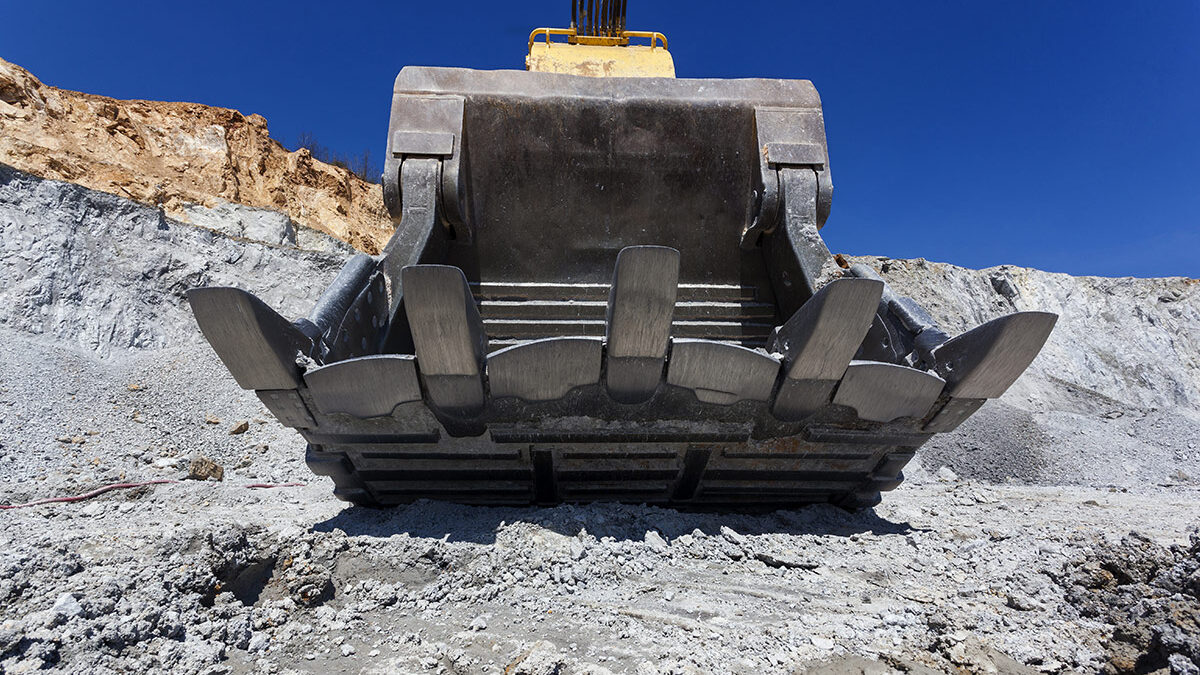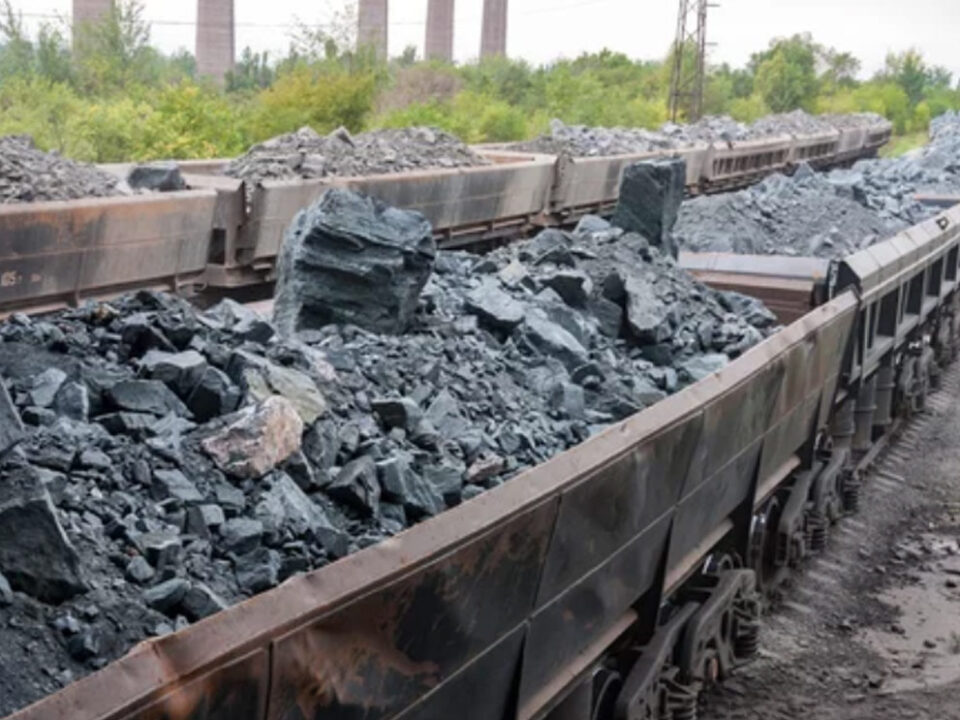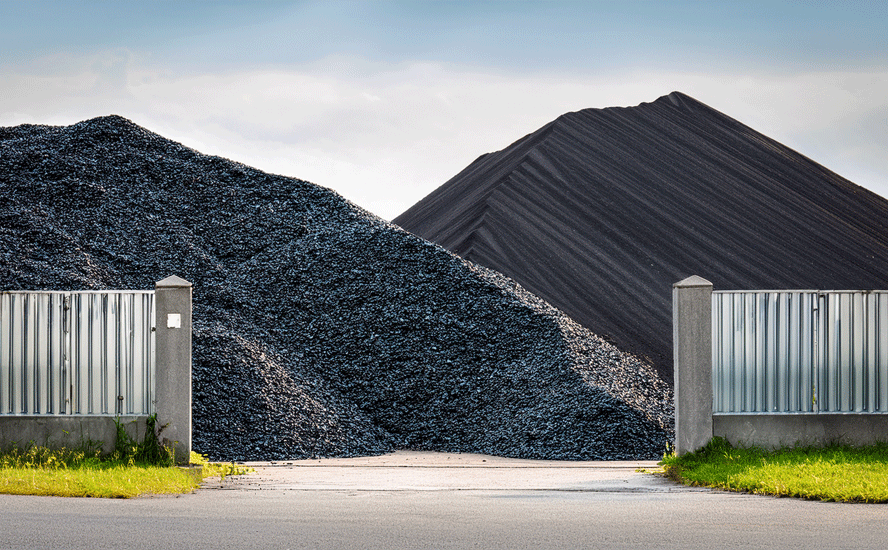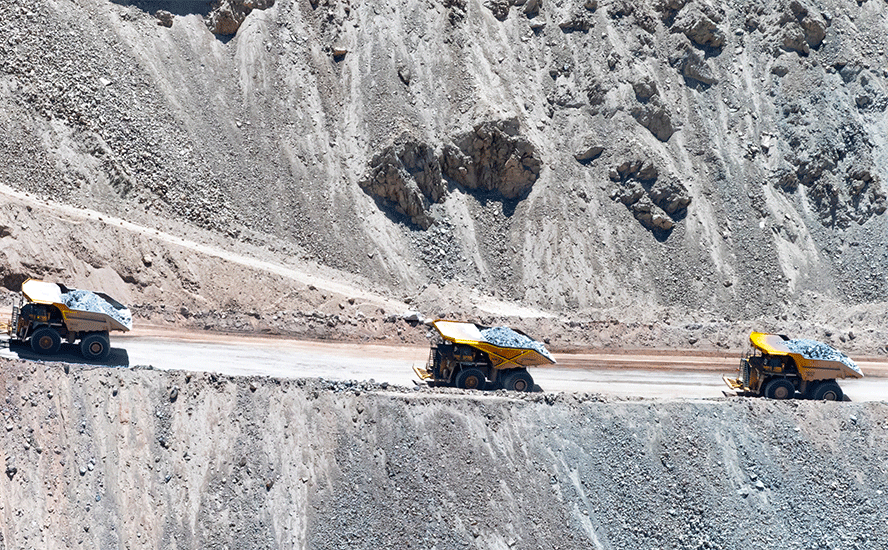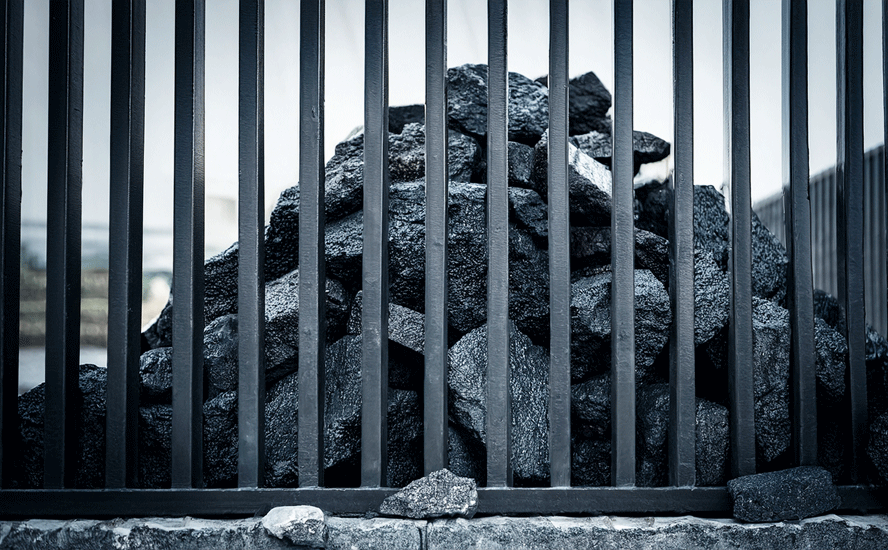Could Norden Crown Metals have discovered a Broken Hill-type deposit?
2021.03.03
Norden Crown Metals (TSXV:NOCR, OTC:NOCRF, Frankfurt:03E) is hunting for high-grade silver and zinc deposits in Scandinavia.
Gumsberg
Gumsberg is an 18,300-hectare land package with five exploration licenses. The property was mined from the 13th century through to the 1900s, with an astounding 30 historic mines on the property including Östra Silvberg — the largest silver mine in Sweden from 1250 to 1590.
The project is in good company, located within the Bergslagen mining district between the past-producing Falun and Saxberget mines, and the active Garpenberg (Boliden) and Zinkgruvan (Lundin) mines.

VMS deposits are sought after for mining because they usually contain a mix of base metals and sometimes precious metals including zinc, lead, copper, silver and gold. The minerals are often clustered together, making them relatively easy to extract.
The geological theory Norden Crown is operating under, is that the high-grade zinc-silver grades they are finding, are re-mobilized mineralization that precipitated out of the rocks as they were squeezed during metamorphism millions of years ago.
The company has delineated steep “chimney-like structures” that are analogous to the orientation of the deposits found at the nearby Garpenberg Mine, some of which go as far as a kilometer deep.
The most exciting aspect of this, is the possibility of finding the original VMS mineralization that could be the source of the re-mobilized deposits.
New geophysical surveys plus reconnaissance drilling and analysis of historical drilling data identified fresh targets near the historical workings.
Over the past three years, Norden Crown’s drilling at Gumsberg has come up with some high-grade hits.
In early 2018, while drilling under the Östra Silvberg mine, Norden Crown drilled a hole that contained such high-grade mineralization, the area demanded further investigation. The hole returned approximately 22% combined lead-zinc, plus well over 600 grams per tonne silver. In 2019, a 1,454-meter drill program reported high-grade silver-zinc-lead results.
At its Östra Silvberg South discovery, hole GUM-19-03 cut mineralization between 262.25 and 270.29m down hole, returning 5.12% zinc, 2.27% lead and 93 grams per tonne silver over 8 meters.
Hole GUM-19-01 pulled up even deeper core, intersecting 1.99m of 2.28% zinc, 25.5 g/t silver and 0.92% lead between 304.96 and 306.95m.
Norden Crown has every intention of conducting further exploration at Östra Silvberg and Östra Silvberg South, however recent success at a different Gumsberg target has the company considering an entirely new approach.
Fredriksson Gruva
Recently Norden Crown started drilling at Fredriksson Gruva, a past-producing mine originally discovered in 1976. Based on historical drilling data and 3D modeling, the company projected that the mineralization does not end below historical mine workings, and instead continues, as suggested by regional drilling done by past explorers looking for iron deposits.
The evidence so far is proving this theory correct.
Having completed the first three drill holes, the company has successfully shown not only that the mineralization continues at depth, but that it has qualities consistent with a Broken Hill Type (BHT) deposit.
BHT silver-zinc-lead deposits constitute some of the largest and highest-grade ore deposits in the world (see Table 4 below). The namesake deposit, Broken Hill, is in western New South Wales, Australia, and represents the largest accumulation of lead, zinc and silver on Earth. Broken Hill Types constitute a distinctive type of stratiform, sediment hosted lead-zinc mineral deposit. They are distinguished from other silver-zinc-lead deposits by the chemistry of the sediment that hosts them, and they are usually associated spatially and temporally with volcanism.
BHT deposits are characterized by:
- High grade Ag + Zn + Pb mineralized ores
- Metamorphic grades ranging to amphibolite-granulite facies
- Paleoproterozoic oxidized clastic metasedimentary host rocks in the absence of metamorphosed carbonates/calcsilicate horizons
- Spatially associated with bimodal (felsic and mafic) intrusive and volcanic rocks, and stratabound gahnite- and garnet-bearing rocks and iron formations
- Stacked orebodies with characteristic Pb:Zn:Ag ratios and skarn-like (generally pyroxenoid dominated) Fe-Mn-Ca-F gangue assemblages
- Sulfur-poor assemblages
- A spatial relationship to continental rifts

The three discovery holes (569m), part of an 11-hole, 2,365-meter diamond drill program at Gumsberg, intersected significant (ie. wide, high-grade) mineralized widths ranging from 8.13 to 13.60 meters of precious and base metals massive and semi-massive sulfide mineralization, in a geological setting unique to the BHT clan of silver-rich zinc-lead ore deposits.
“We are delighted to present to our shareholders robust silver-zinc-lead intersections which are part of a bona fide Broken Hill Type mineralizing system at Fredriksson Gruva; the widths and grades intersected beneath the historical mine workings suggest that the Gumsberg Project has exceptional growth potential,” said Patricio Varas, Norden Crown’s Chairman and CEO, in the March 1 news release. “Massive sulphide deposits are special because it is possible to delineate large tonnages from comparatively small drill footprints due to the high density of the mineralization. To put these results into perspective, Norden Crown’s GUM-20-09 intercept is comparable in width to the height of a three-story building.”
The drill program’s objective was to demonstrate that the mineralization continues below the Fredriksson mine workings, which extend to 91m depth, and to confirm historical silver-zinc-lead grades, thicknesses, and continuity.
Holes GUM-20-09 and GUM 20-10 were positioned 30 meters down plunge of the historical workings, and spaced 40m apart. Hole GUM-20-11 was drilled 30m below GUM 20-10, or 60m below the workings.
Drill core from hole 09 cut a 10.35-meter intercept grading 5.24% zinc, 1.84% lead and 43.86 g/t silver; hole 11 featured an 8.15m intercept @ 3.83% zinc, 0.503% lead and 18.13 g/t silver; and the best result, from hole 10, returned 13.60m at 6.05% zinc, 1.39% lead and 43.20 g/t silver.

According to Norden Crown,
An important aspect of the mineralization is that the massive to semi-massive sulphide intervals are developed within a broader sequence of highly magnetic iron and manganese- rich chemical sediments. This distinctive and thick sequence of chemical sedimentary rocks will provide an important marker horizon that will be used to track the mineralization along strike and at depth…
Significantly, the intimate association with magnetite iron formations is considered an important guide for Norden Crown to follow and explore for continuous mineralized BHT deposits along the +21 kilometre belt of prospective iron formation. In addition, the association of manganiferous garnets (spessartine), the presence of stratabound gahnite in the metamorphosed sedimentary rocks, and anomalous base metals in these deposit types provide an excellent first pass screening that will be useful for evaluating these prospective iron formations for their potential to host BHT deposits.
The findings from the first three holes provide further confirmation that Norden Crown is into a Broken Hill-type deposit such as those found in Australia, South Africa and parts of the Bergslagen mining district of southern Sweden where Gumsberg is located.
The first indication was earlier this year, when Norden Crown announced observations from the first drill hole at the prospect (assays were not yet available at that time).
“The drilling of stratiform sulfides on our first drill hole below the mine workings at Fredriksson Gruvan is of great importance, as it most assuredly confirms the continuity of the mineralization at depth below the old mine,” Varas stated in the Jan. 7 news release. “Furthermore, the confirmation that we are testing a Broken Hill Type Zn-Pb-Ag mineralized prospect is hugely encouraging as these style deposits are very few around the world and include some of the largest accumulations of Pb-Zn-Ag on Earth.”
Reported grades from mined ore are remarkably consistent, and past drilling rarely missed mineralization, which Varas says is very encouraging for further resource expansion.
Future diamond drilling at Fredriksson Gruva will test the continuity of BHT-style mineralization, and associated iron formation, below the historical mine workings, where ongoing 3D geological modeling demonstrates that silver-zinc-lead mineralization could extend to at least 290 meters depth.
Broken Hill geology
The geology of the Broken Hill orebody is a series of boomerang-shaped, highly sheared and disrupted, ribbon-like and poddy (elongated, lens-shaped) massive sulfide lenses that outcrop in the central section (hence the name “Broken Hill”) and then plunge steeply north and moderately south.
The deposit is one of the greatest orebodies on the planet, due to its grades, size and continuity.
Broken Hill’s ore consists of massive, recrystallized sphalerite, galena-sphalerite and galena-rich sulfide lenses often consisting of up to 100% lead-zinc sulfides. It is one of the most diverse mineralogical assemblages in the Earth’s crust, with 1,500 or more mineral types recognized at Broken Hill, including several dozen not reported elsewhere.
According to Gustafson, via Wikipedia, “The Broken Hill lodes are massive lead-zinc sulphide replacement orebodies forming (before erosion) a long continuous, irregular flat, curving pencil of ore roughly 2,000-3,000 feet high and 300 feet thick. In longitudinal section, the deposit describes a broad arc, flat in its middle (highest) portion, and pitching downward at each end…continuously mineralized for a horizontal distance of more than 3 miles.
“There is evidence that the ore has been introduced into an old, already folded, rock and has replaced certain favorable layers of that rock, particle by particle, with large tonnages of garnet, rhodonite, fluorite, marmatite (and wurtzite) galena, and other minerals that constitute the orebodies.”
Although there are differing opinions on its origins, Broken hill is thought to be a sedimentary exhalative (SEDEX) deposit that has been extensively reworked and modified by metamorphism and shearing. The proof for this is that in most SEDEX deposits found worldwide, silver, lead and zinc are the main components. The metamorphic deformation at Broken Hill has resulted in the squeezing of lead and zinc sulfides into their boomerang shape, and in the separation of the orebody into zinc-rich and lead-rich lodes and domains.
Geologists believe the deposit formed from volcanic activity about 168 million years ago. Water superheated by magma in the Earth’s core, flowed up through the underlying rocks, then escaped through cracks in the seafloor, forming billowing clouds of black sulfide precipitates known as “black smokers”. These settled on the seafloor and over millions of years, formed sediments rich in zinc, lead and silver sulfide minerals.
Hosted within gneisses, or rock formed by regional metamorphism, of the Willyama Supergroup, the Broken Hill orebody descends over 1.5 km underground at its deepest point. It is believed to have originally contained over 180 million tonnes and is the largest zinc-lead-silver accumulation on the planet. The deposit has been mined continuously for almost 120 years.
BHT deposits
Broken Hill is the archetypal “Broken Hill Type” (BHT) deposit against which other similar orebodies are compared, but what exactly is a BHT?
Broken Hill Type deposits are a kind of sediment-hosted lead-zinc deposit. They are distinguished from other types of lead-zinc deposits, such as volcanogenic massive sulfides (VMS) and SEDEX, by the characteristics of their host rock packages.
Most of the world’s BHT deposits are concentrated in Australia, Sweden and Africa. The map below shows the main ones. According to a research paper on Broken Hill-type lead-zinc deposits authored by geologist Robert Beeson, PhD, “Broken Hill-type deposits are major resources and sources of lead, zinc and silver. The large size of some deposits of the type, plus their potential to contain high grades of Pb-Zn, makes them an attractive exploration target. In addition, the metamorphic overprint increases the grain size of minerals and improves processing amenability. In consequence, deposits of this type are currently being mined in five continents.”

There are two settings where mineralization in BHT deposits occurs: in calc-silicate rocks and in banded iron formations (BIF). (most Broken Hill Types contain both calc-silicates and BIF, but usually one is more prevalent than the other)
Examples of the calc-silicate type are the Broken Hill Mine in Australia, Zinkgruvan in the Bergslagen mining district of Sweden, currently being mined by Lundin, and the Franklin zinc-iron-manganese deposit in New Jersey, USA.
Banded iron formations known to host Broken Hill Type mineralization include the Dammberg deposit in Sweden which is close to Norden Crown Metals’ Fredriksson target; Gamsberg and Aggeneys in South Africa, Pegmont at Mount Isa, Australia; and Boquira in Brazil. (see table below)

For our purposes, the key takeaway is that banded iron formations (BIFs) are one of the host sedimentary rocks for Broken Hill Type mineralization. They do not constitute the mineralization itself, which in both types of Broken Hill Type host rocks, calc-silicates and banded iron, was deposited from hydrothermal fluids carrying monster amounts of silver, zinc and lead.
Geologists know banded iron formations to be the largest and most concentrated accumulation of metalliferous elements in the Earth’s crust.
They account for around 60% of global iron reserves, and can be found in Australia, Brazil, Canada, the United States India, Russia, Ukraine, South Africa and Scandinavia.
Banded iron formations can run for several kilometers and often contain multiple deposits.
Indeed, some of the world’s largest lead-zinc deposits occur in environments where the host rock is a banded iron formation, and where the mineralization is of a Broken Hill-type. Below are three.
Aggeneys
Aggeneys in South Africa consists of four major sediment-hosted lead-zinc-copper-silver deposits: Broken Hill, Swartberg, Big Syncline and Gamsberg. At the copper-rich Black Mountain Mine, two massive sulfide orebodies, the thicker Upper Orebody (UOB) and the thinner Lower Orebody (LOB), are both hosted in banded iron formations.
Gamsberg
The Gamsberg Mine, jointly owned by Exxaro Resources, Vedanta Resources and employees, sources ore from the Gamsberg zinc deposit discovered in 1972. Gamsberg continues to be the country’s largest base metal resource with a mine life of 30 years from 2019, the year the mine officially opened. The current resource sits at 214 million tonnes, with a zinc grade of between 6% and 6.5%.
Boquira
The Boquira lead-zinc deposits in Brazil originally totaled around 8 million tonnes at 9% lead, 2% zinc and 28 grams per tonne silver; 5.6Mt was mined to 1985, and production continued until 1987 at a rate of ~300,000 tpa. Four distinct orebodies run along the mineralized zone for 5 kilometers, with each zone including up to three parallel lenses. The mineralization, which features galena, sphalerite and pyrite as the main components, is associated with banded iron formations.
Broken Hill affinity at Fredriksson
Of course, it is too early to say whether Norden Crown could have resources approaching a Broken Hill, a Cannington or a Gamsberg (consider the scale of these mines — the temporary closure of Gamsberg last year due to an accident was a factor in hiking zinc prices), but we are excited by the possibility, and encouraged by Fredriksson’s proximity to an orebody that is thought to be of Broken Hill-type.
The past producing Stollberg Mine (6.7Mt) is located south of Norden Crown’s Gumsberg project. The main deposits of the Stollberg ore field comprise a chain of orebodies that occurs discontinuously for 5 km, along a prominent marble and skarn horizon. The orebodies mostly contain magnetite and a combination of sphalerite (zinc), galena (lead) pyrrhotite, and lesser pyrite and chalcopyrite (copper) with marble and skarn.
The most substantial deposit in the Stollberg field is Dammberg, which, according to a 2015 Iowa State University research paper, is a Broken Hill Type deposit. An excerpt from the paper, authored by graduate student Katherine Suzanne Frank, states,
As part of a general review of Broken Hill-type deposits, Beeson (1990) considered the Dammberget deposit to be of the Broken Hill-type, based on the presence of an oxidized stratigraphic setting, its Proterozoic age, the upper amphibolite metamorphic facies, a regional Na alteration stratigraphically below the deposit, and spessartine-bearing rocks associated with sulfides and surrounding rocks.
Norden Crown owns 10 km of this Broken Hill Type mineralized trend, heading south from Garsberg towards the Stollberg ore field controlled by Boliden Mining, which also runs the producing Garpenberg Mine to the east of Gumsberg and is a major player in the region.

Stollberg’s Dammberg, it must also be noted, is hosted in a Banded Iron Formation — one of two settings where mineralization in BHT deposits occurs, the other being in calc-silicate rocks. Banded iron formations make for excellent exploration targets as they are easily detectable with magnetic surveys, flown at tight spacings, and because their sedimentary nature can be traced for kilometers. Should banded iron formations be associated with BHT mineralized zones, they can provide a good guide to explore for and find more such zones.

So far, Norden Crown only has three holes into the Fredriksson target, but it is enough for the company to make several observations pointing to evidence of a Broken Hill Type deposit. (see table below)

Conclusion
The presence of BHT mineralization hosted in banded iron formations could be an important characteristic at Fredriksson to trace and find deposits with the potential for scale — something a junior like Norden Crown Metals must be able to demonstrate to a prospective major (or mid-tier) acquirer.
CEO Pat Varas knows how the game is played, and understands that his role, as chief executive, is to find projects that will excite the market, have development/ expansion potential, and hopefully, add significant shareholder value.
Varas and Norden Crown have come across a potential Broken Hill Type deposit in their Fredriksson target, that we believe is going to become the company’s focus going forward. If Norden Crown does indeed have a BHT deposit that we know will be of interest to an acquirer, it will be exciting to see them continue to characterize it and delineate it, hopefully to scale, as drilling there continues.
Norden Crown Metals
TSXV:NOCR, OTC:BORMF, Frankfurt:03E
Cdn$0.105 2021.03.02
Shares Outstanding 133,196,582m
Market cap Cdn$13.8m
NOCR website
Richard (Rick) Mills
aheadoftheherd.com
subscribe to my free newsletter
Legal Notice / Disclaimer
Ahead of the Herd newsletter, aheadoftheherd.com, hereafter known as AOTH.
Please read the entire Disclaimer carefully before you use this website or read the newsletter. If you do not agree to all the AOTH/Richard Mills Disclaimer, do not access/read this website/newsletter/article, or any of its pages. By reading/using this AOTH/Richard Mills website/newsletter/article, and whether or not you actually read this Disclaimer, you are deemed to have accepted it.
Any AOTH/Richard Mills document is not, and should not be, construed as an offer to sell or the solicitation of an offer to purchase or subscribe for any investment.
AOTH/Richard Mills has based this document on information obtained from sources he believes to be reliable but which has not been independently verified. AOTH/Richard Mills makes no guarantee, representation or warranty and accepts no responsibility or liability as to its accuracy or completeness. Expressions of opinion are those of AOTH/Richard Mills only and are subject to change without notice. AOTH/Richard Mills assumes no warranty, liability or guarantee for the current relevance, correctness or completeness of any information provided within this Report and will not be held liable for the consequence of reliance upon any opinion or statement contained herein or any omission. Furthermore, AOTH/Richard Mills assumes no liability for any direct or indirect loss or damage or, in particular, for lost profit, which you may incur as a result of the use and existence of the information provided within this AOTH/Richard Mills Report.
AOTH/Richard Mills is not a registered broker/financial advisor and does not hold any licenses. These are solely personal thoughts and opinions about finance and/or investments – no information posted on this site is to be considered investment advice or a recommendation to do anything involving finance or money aside from performing your own due diligence and consulting with your personal registered broker/financial advisor. You agree that by reading AOTH/Richard Mills articles, you are acting at your OWN RISK. In no event should AOTH/Richard Mills liable for any direct or indirect trading losses caused by any information contained in AOTH/Richard Mills articles. Information in AOTH/Richard Mills articles is not an offer to sell or a solicitation of an offer to buy any security. AOTH/Richard Mills is not suggesting the transacting of any financial instruments but does suggest consulting your own registered broker/financial advisor with regards to any such transactions.
Richard owns shares of Norden Crown Metals Corp. (TSXV:NOCR) NOCR is a paid advertiser on his site aheadoftheherd.com
Legal Notice / Disclaimer
Ahead of the Herd newsletter, aheadoftheherd.com, hereafter known as AOTH.Please read the entire Disclaimer carefully before you use this website or read the newsletter. If you do not agree to all the AOTH/Richard Mills Disclaimer, do not access/read this website/newsletter/article, or any of its pages. By reading/using this AOTH/Richard Mills website/newsletter/article, and whether you actually read this Disclaimer, you are deemed to have accepted it.

